BRACES FAQ
Orthodontics is that branch of dental medicine which treats the anomalies of teeth and maxillary bones. Although it is true that crooked teeth are the primary reason why patients usually undergo an orthodontic treatment, but there can be other reasons too. For instance, the patient cannot chew properly, is in pain, has clicking temporo-mandibular joints or snores. It is important to know that teeth erupting in a bad position, besides causing esthetical problems, can also disturb other functions of the masticatory system such as: speech and breathing can suffer, the quality of chewing decreases which might lead to other general affections and temporomandibular joint disease as well as tooth caries can also appear.
Best is to prevent or correct all of these problems in childhood. As strange as it may seem, teeth in malposition might affect the whole physical, psychological and spiritual development of a child. While in childhood there is still chance to influence the evolution of bones, which can be done mostly with removable appliances, this is possible to a much lesser extent once the growth phase has ended. After the eruption of permanent teeth, mainly the use of fixed appliances comes into consideration, which have a reduced effect on bones, but these are the best for positioning the teeth correctly.
One important characteristic of the fixed appliances is that they make possible orthodontic treatment for adults, which opens a lot of new possibilities for the treatment of these patients such as the completion of an orthodontic treatment which did not take place in childhood, or the preparation of teeth for a more esthetic prosthodontic treatment.
Parents should pay close attention to the development of the teeth of their children. If something unusual or irregular is observed, a specialist should be seen even though the child is still very young.
Otherwise the first orthodontic screening should take place at the age of 8-9 when the four incisors and the first permanent molars have already errupted both up and down. If some kind of bony anomalie is recognised at this time, the treatment can already begin usually with some kind of removable or partially fixed appliance.
If no problem can be detected at this age or if the treatment can be postponed, the next screening should be at the age of 11-12 when all the baby teeth have been changed and the permanents have already appeared. This is the time to begin the treatment with a fixed appliance and to correct all the anomalies.
Openbite
We talk about openbite when there is a space between the dental arches even though they are closed. It is a typical consequence of thumb sucking, the use of pacifiers and tongue thrust.
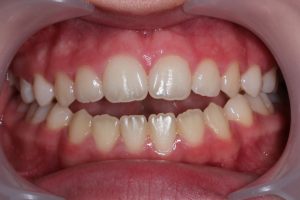
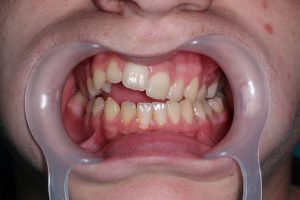
Uni- or bilateral crossbite
Normally, the upper arch circumscribes the lower. In case of a crossbite, the lower arch circumscribes the upper one on one side or on both.
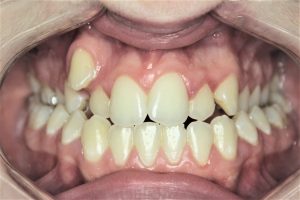
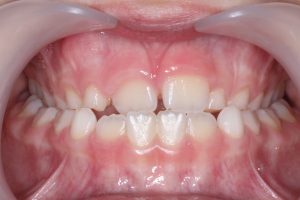
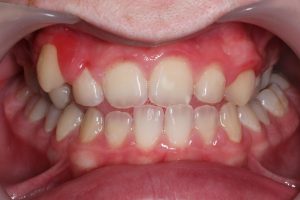
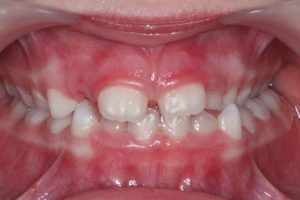
Frontal crossbite
The lower incisors bite in front of the upper ones or the whole upper arch is circumscribed by the lower one. Usually it is an inherited anomaly, less frequently it can also be a consequence of vicious habits.
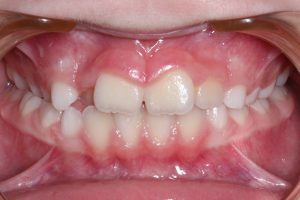
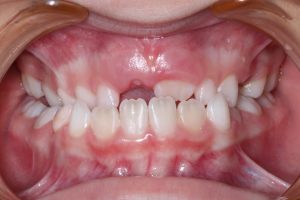
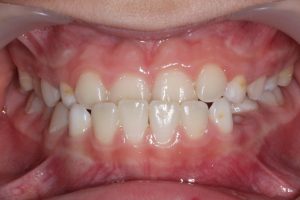
Scissorsbite
The two arches do not meet in the lateral region, they bite beside each other like the scissors.
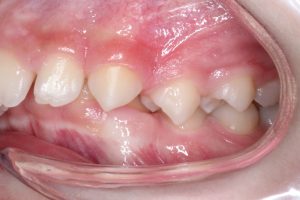
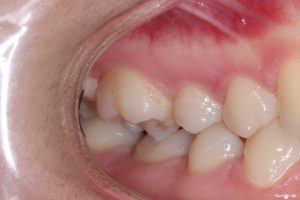
Protruded upper arch
The upper arch reaches too far away beyond the lower one, so that the upper incisors are hanging out of the mouth while the lower arch is far in the back, being inhibited in its growth. All these are characteristic symptoms of thumb sucking or oral breathing.
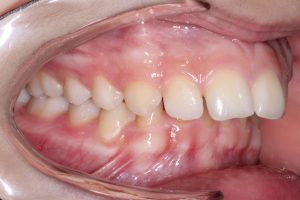
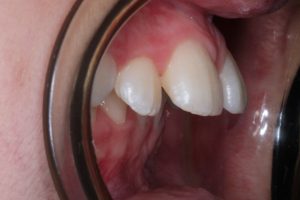
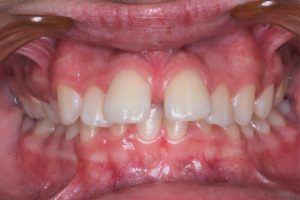
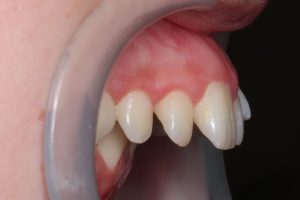
Deepbite
The upper incisors fully cover the lower ones, in some cases the lower incisors bite on the palatal gingiva behind the uppers. The upper incisors can be typically retroclined.
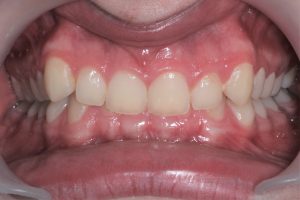
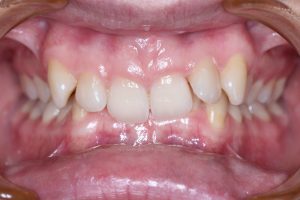
Basically, there are two types of orthodontic appliances: fixed and removable ones. Both types have their indications and one cannot replace the other. Removable appliances are called removable because the patients can take them out of their mouth. This way both the appliance and the teeth can be cleaned better, but it also depends on the patient how much he/she wears it. The more it is worn, the better it can achieve its goals, that is why it needs to be in the patient’s mouth at least for 10-12 hours a day, so not just during the night.
The major advantage of fixed appliances is that they cannot be removed by the patient, so they can produce their effect at all times, but they are more uncomfortable, their cleaning is more difficult and takes more time. The fixed appliance can be made of a metallic alloy or some kind of aesthetic material (composite, ceramics, sapphire etc.). The latter ones are much less visible and they were invented for adults, for whom appearance is more important. The metallic appliances can be augmented with coloured parts, which are very attractive and popular among children.
Ez az egyik leggyakoribb kérdés, ami elhangzik egy fogszabályzó praxisban. A válasz pedig, hogy ez a rendellenesség súlyosságától, összetettségétől függ, valamint nem utolsó sorban a páciens közreműködőkészségétől. Vannak egyszerűbb és bonyolultabb esetek, amelyek többfázisú kezelést és több típusú készüléket igényelnek. Ilyenkor egy kivehető vagy egy kiegészítő készülékes kezelést követ egy rögzített készülék. Általában véve, egy kezelés kb. 1,5-2 évbe telik, amit sokszor maga a páciens is meghosszabbíthat abban az esetben, ha nem viseli rendszeresen a készüléket, illetve nem vigyáz a készülékére, ami gyakran sérül és javításra szorul.
The orthodontic treatment begins with a consultation, when the specialist examines clinically the patient and takes intra- and extraoral photos and impressions of the dental arches. For a correct and complete diagnosis, two types of radiographies are also needed (a panoramic and a lateral cephalometric X ray) and depending on the case, some other paraclinical examinations might also be recommended. Based on all this information the anomaly is identified and the treatment plan can be built.
If the patient accepts the treatment plan proposed by the doctor, the treatment can begin, which can last several months or even years, during which regular controls are necessary. The patient should be seen by the doctor every 5-6 weeks, when the progression of the treatment is checked and the appliance is activated. It is important to stick to the doctor’s recommendations regarding the wearing and cleaning of the appliance, because these are all meant to serve a favourable outcome.
When the doctor considers that the anomaly has been entirely corrected, the appliance can be removed. The active phase of the treatment is followed in most of the cases by a retention phase. On the upper arch this usually consists of a removable appliance, which should be worn only during the night, while on the lower arch it is represented by a wire fixed on the inner side of the teeth. These appliances need to be checked only once every 6 months and they are needed to preserve the results of the treatment.
Another very frequently asked question is, whether we absolutely need to extract teeth for the orthodontic treatment. Extractions are not an indispensable part of every treatment. Although, a lot of anomalies can only be treated if we remove teeth. This is needed, because in these cases the size of the teeth is much bigger than that of the bone in which they should fit in. Due to the fact that the size of the bone usually cannot be increased, in order to be able to match the teeth to the bone, we must intervene on the teeth by reducing their number. Many times, these might be perfectly healthy teeth, but keeping them on the arch would have more negative consequences on the long term than sacrificing them. Last but not least, it is also important to know that the place of the teeth being removed for orthodontic reasons will be completely closed during the treatment and the patient will not need prosthodontics for this reason in the future.
Sensitivity
A few days after getting braces, usually teeth become sensitive. The intensity of this sensitivity is very variable, it depends on each person, sometimes it does not occur at all and sometimes it can be a serious ache. It might appear during eating when chewing or even spontaneously. For relief, first of all soft food is recommended. When this is not enough, painkillers should be taken. But in all cases, it should disappear without medication in a few days.

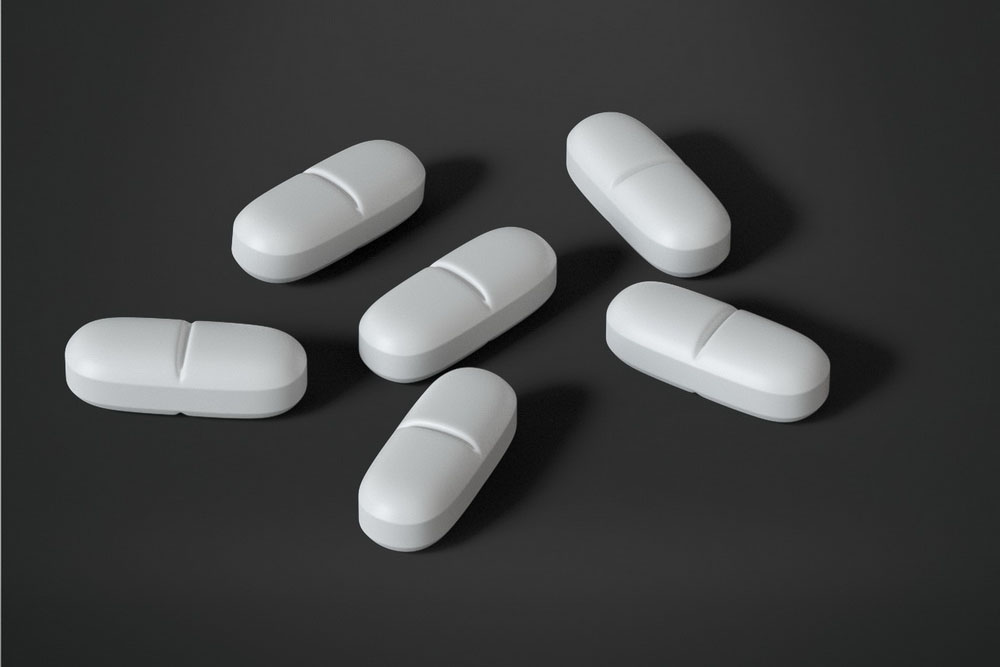








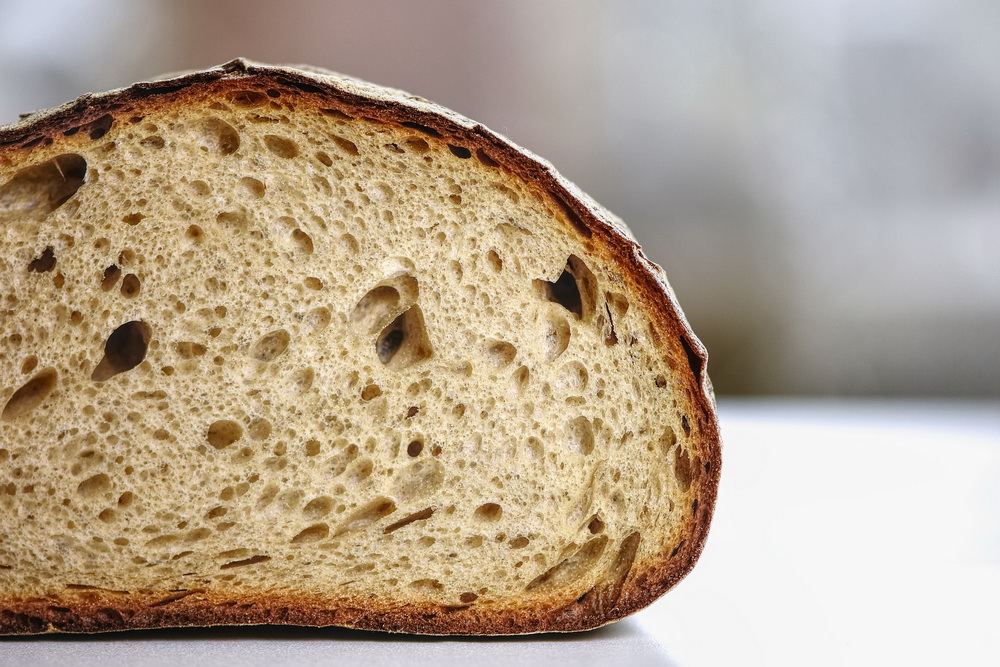

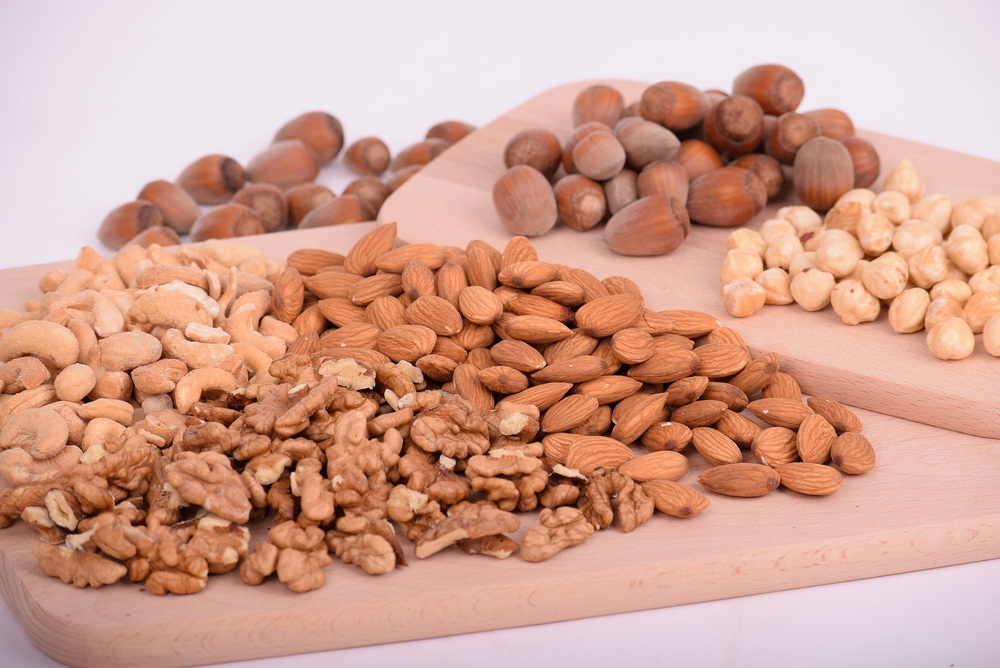

Eating
After the initial sensitivity is gone, usual food can be eaten, but very carefully! You should not forget that you are wearing a bonded appliance, the elements of which can become loose if you tense them by biting on something hard. So here are a few items from the list of food which you should avoid eating/ biting on while wearing braces: toasted bread, nuts, almonds, corn, peach, raw carrot and other vegetables, apple etc. Essentially most food can be eaten, but carefully, cut into smaller pieces.




Loose brackets
If an intermediate bracket becomes loose (it still has fixed neighbours on both sides), it only begins to slide along the archwire. It is not necessary to intervene as an emergency at home, because usually it does not disturb. The loose bracket will be bonded back at the next appointment.
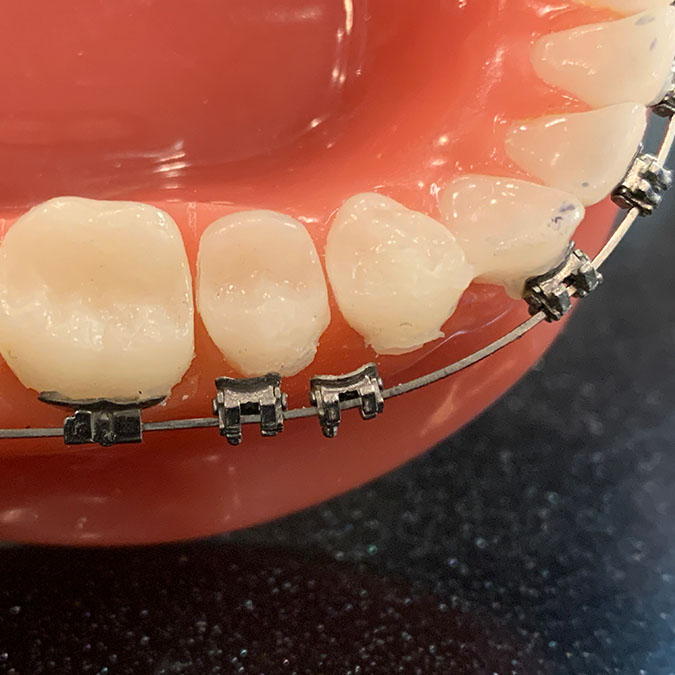
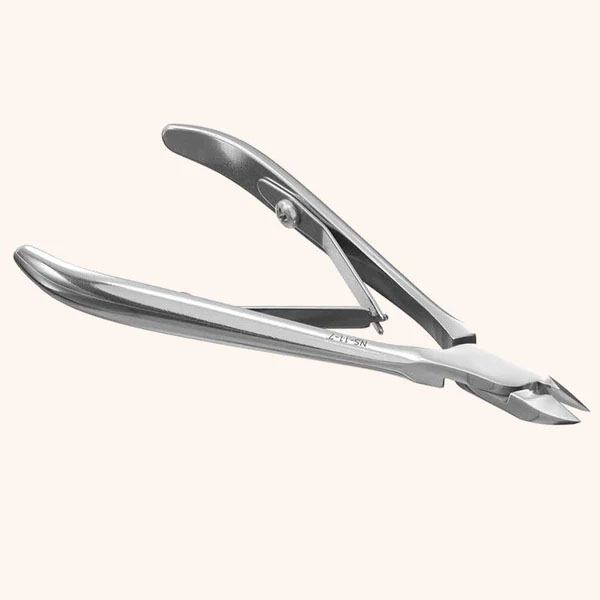
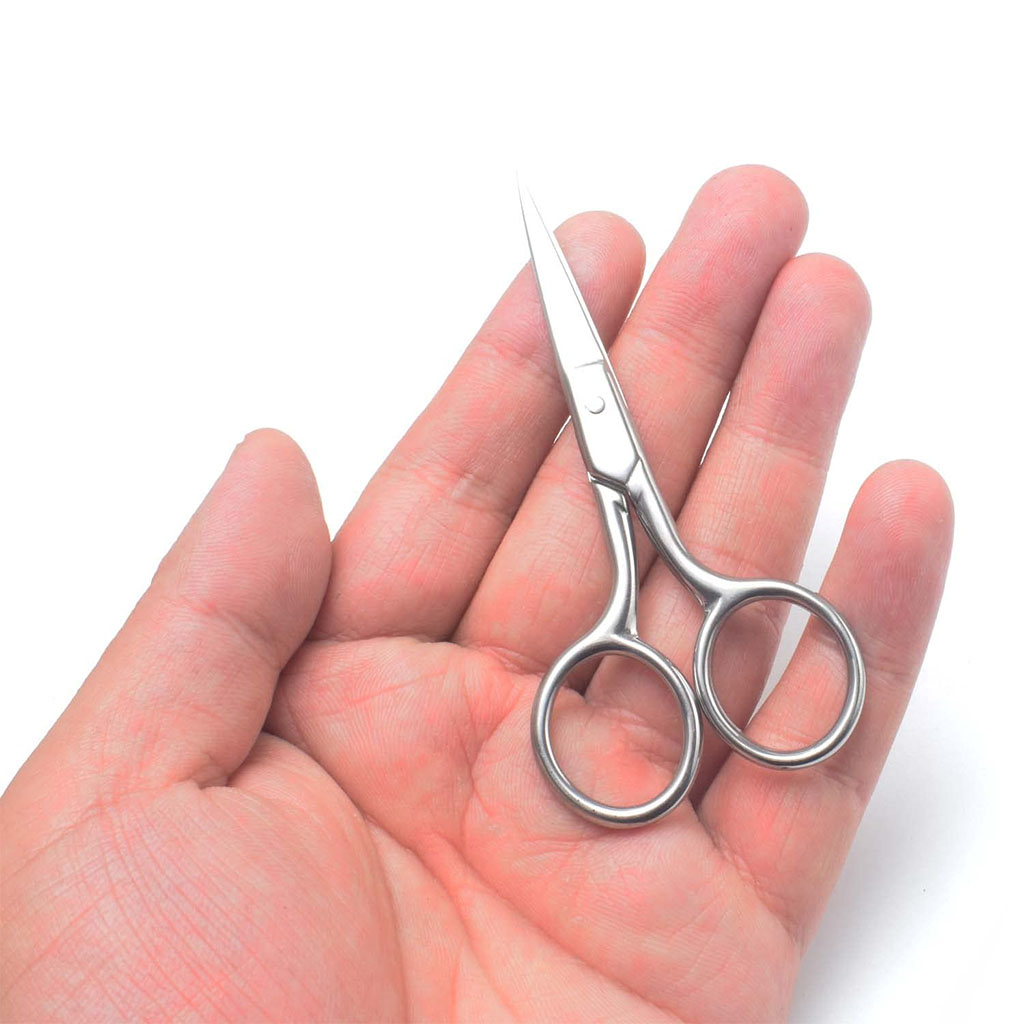
If the bracket on the last tooth, the so-called tube, becomes loose, it will either slip down the archwire to the back or it will begin to move with it. This can be very disturbing and it might be necessary to intervene at home as an emergency. In this case the loose element should be cut together with the wire. The most suitable instruments for this purpose are small scissors, nail cutters, small pliers etc., basically anything that can be found in a household for cutting wire.
However, you should be aware that the affected tooth will no longer be under the effect of the appliance. In the same time, the broken element is not safe or it cannot be reapplied, so besides setting back the treatment, the accident has financial consequences as well. That is why these kinds of unpleasant events should be avoided to the extent possible, especially since majority of them are caused by not being careful enough while eating.
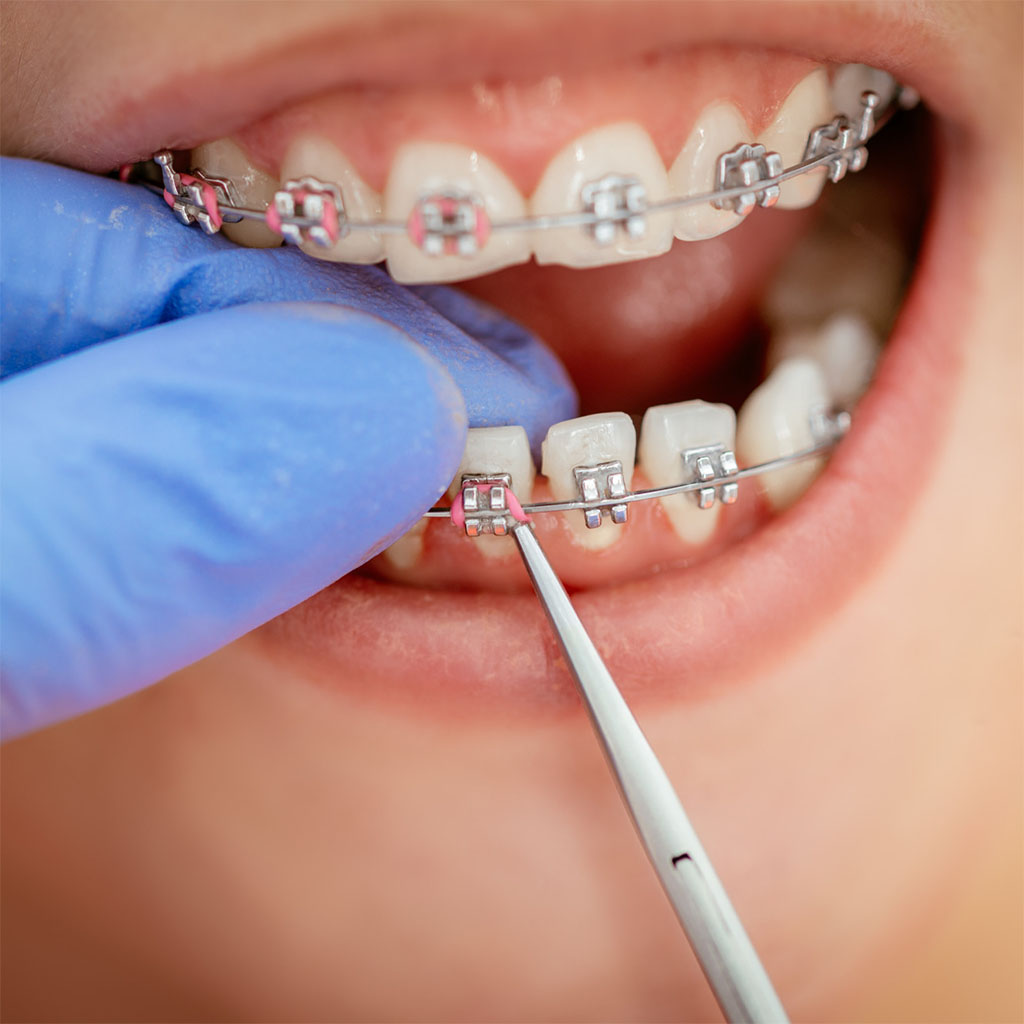
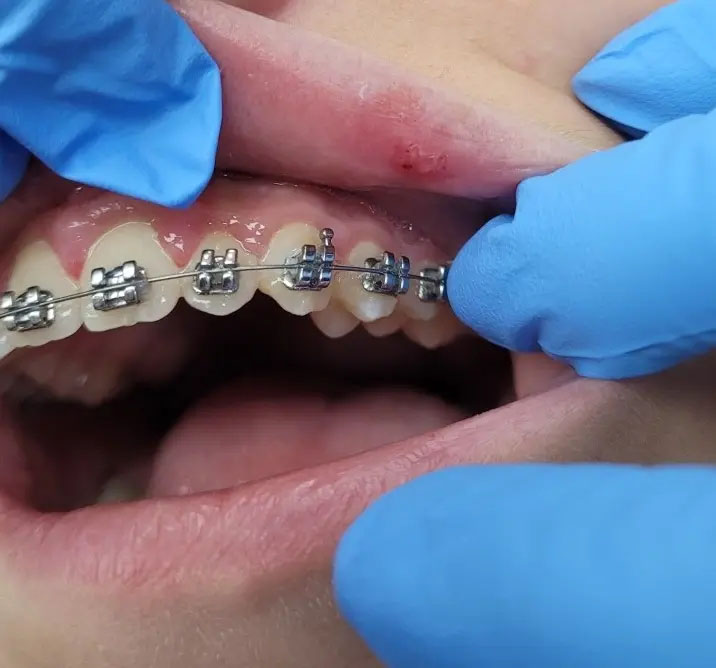
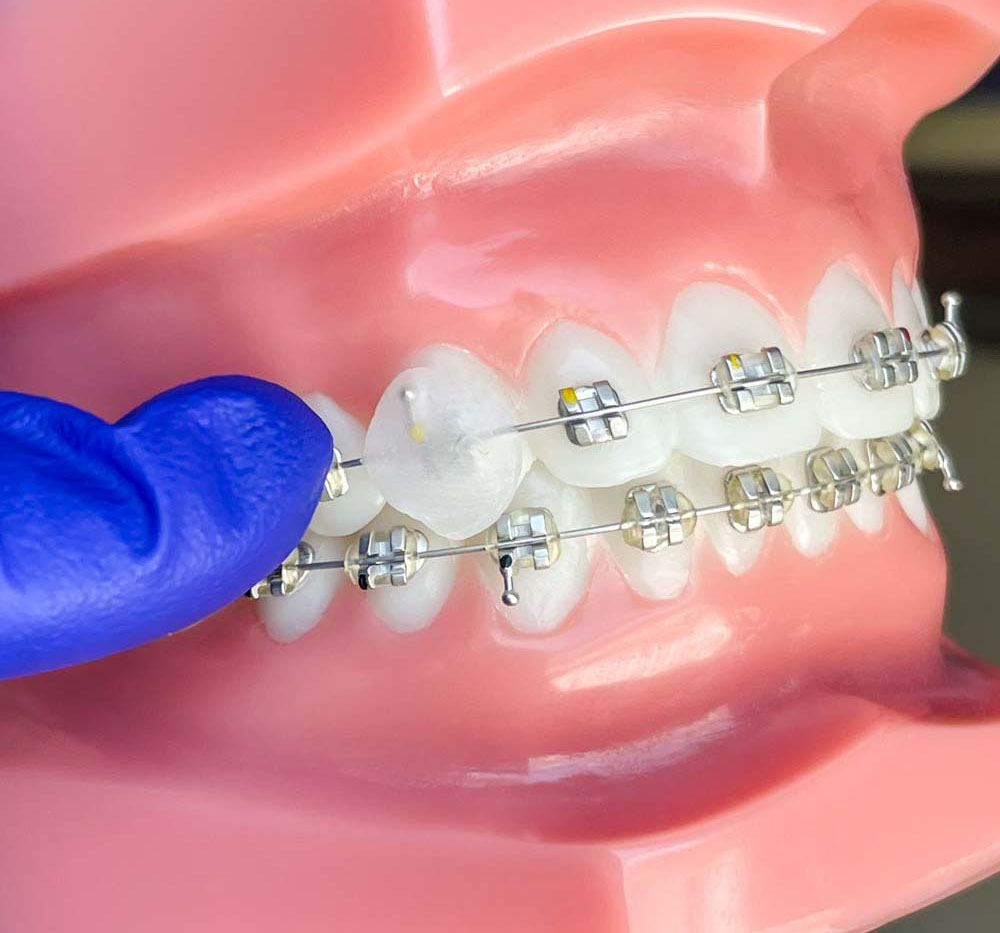







Wounds
Every fixed appliance has bulging parts, which can hurt the mucosa of the buccal cavity and might cause wounds. When a wound appears, wax should be used (see the attached picture) in the following way: a small piece of the wax stick should be placed on that part of the appliance which causes the problem. If the wax falls down after a while, another piece should be placed until the wound heals. To help healing, camomile tea should be used for rinsing. After some time, the mucosa gets used to the presence of the appliance and the discomfort will disappear.
When there is an appliance on the palate, this can leave its impression on the tongue, because the tongue is pushed to the palate with each swallowing. This can be quite painful. As a relief, rinsing with camomile tea is recommended.
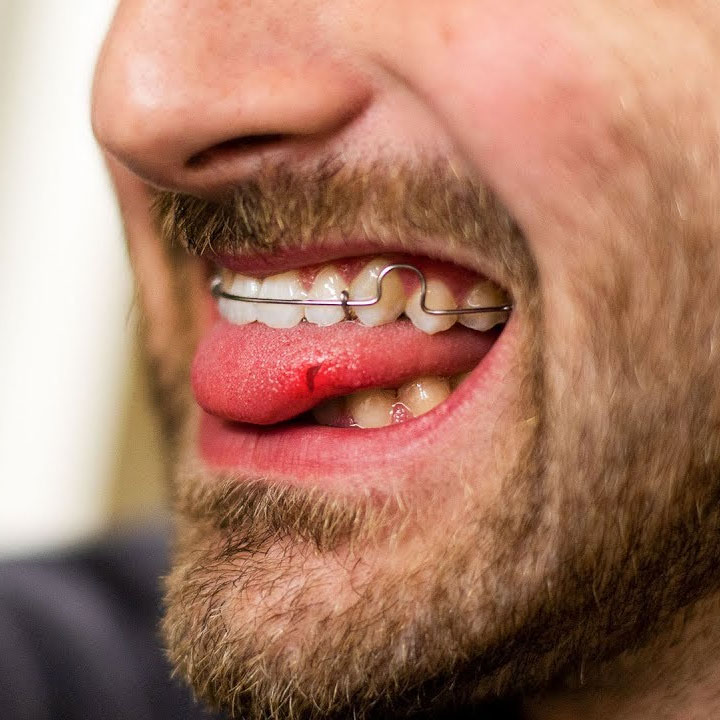
Cleaning
One of the most important things when wearing an orthodontic appliance is proper cleaning. Brushing in the morning and in the evening is indispensable, but ideally teeth should be cleaned after every meal when wearing braces. This is crucial because teeth no longer have their self-cleaning potential and the stuck food can be eliminated only with a toothbrush. Brushing is done with a manual toothbrush with vertical movements from the gingiva to the edge of the tooth or to the occlusal surface. This way on the upper arch the movements are down from the top, while on the lower arch they are from up to the top.
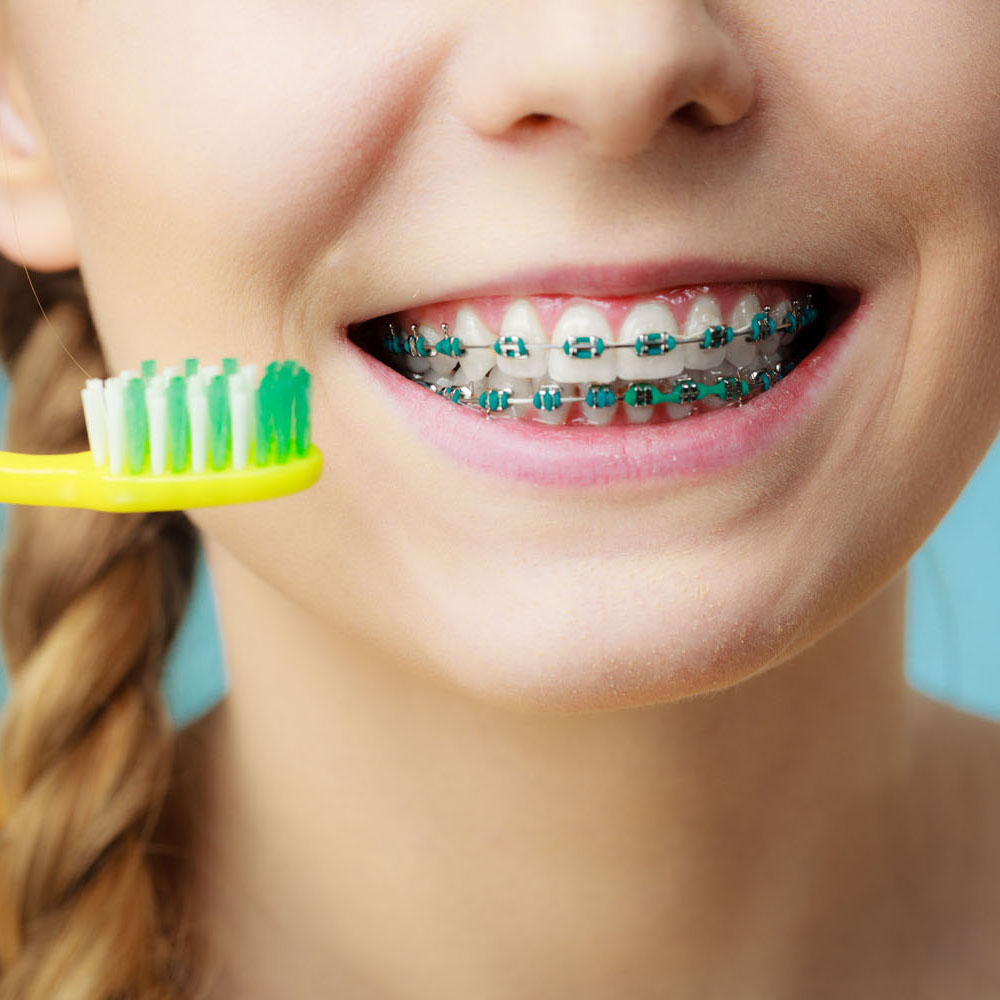
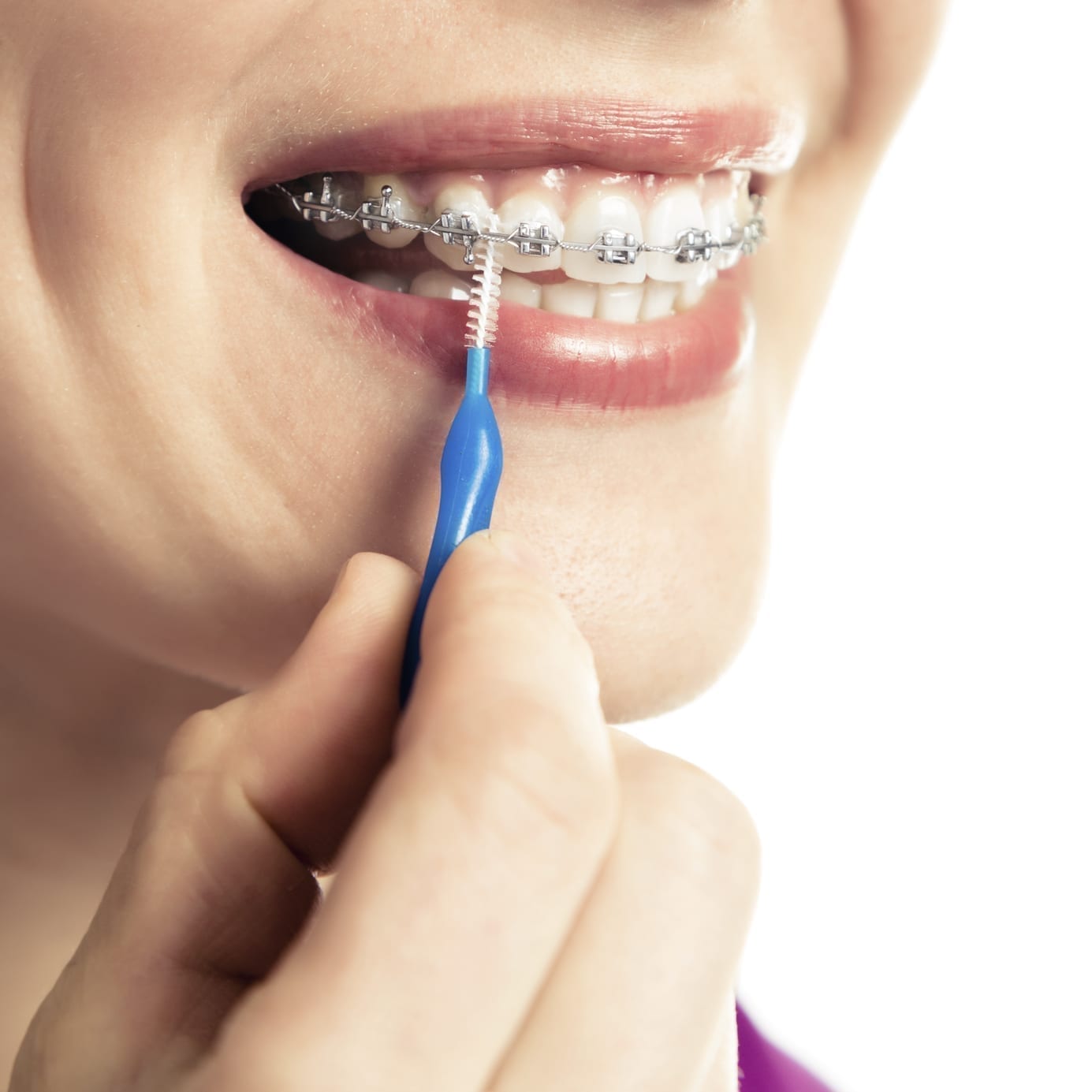
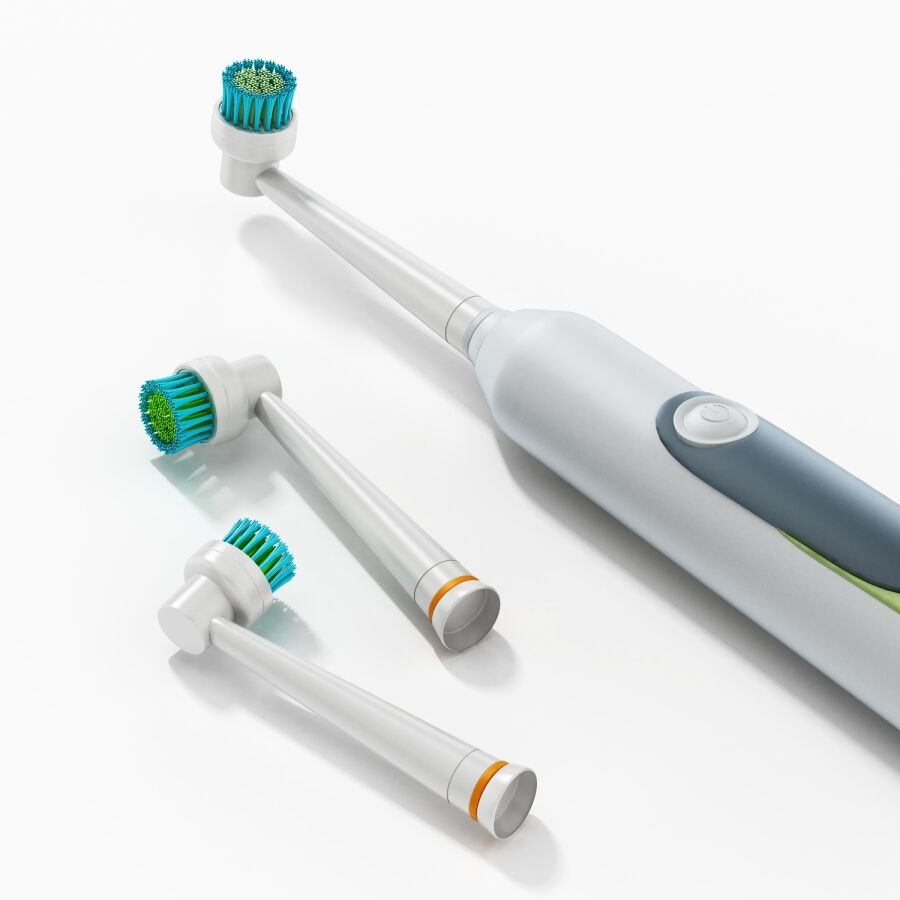
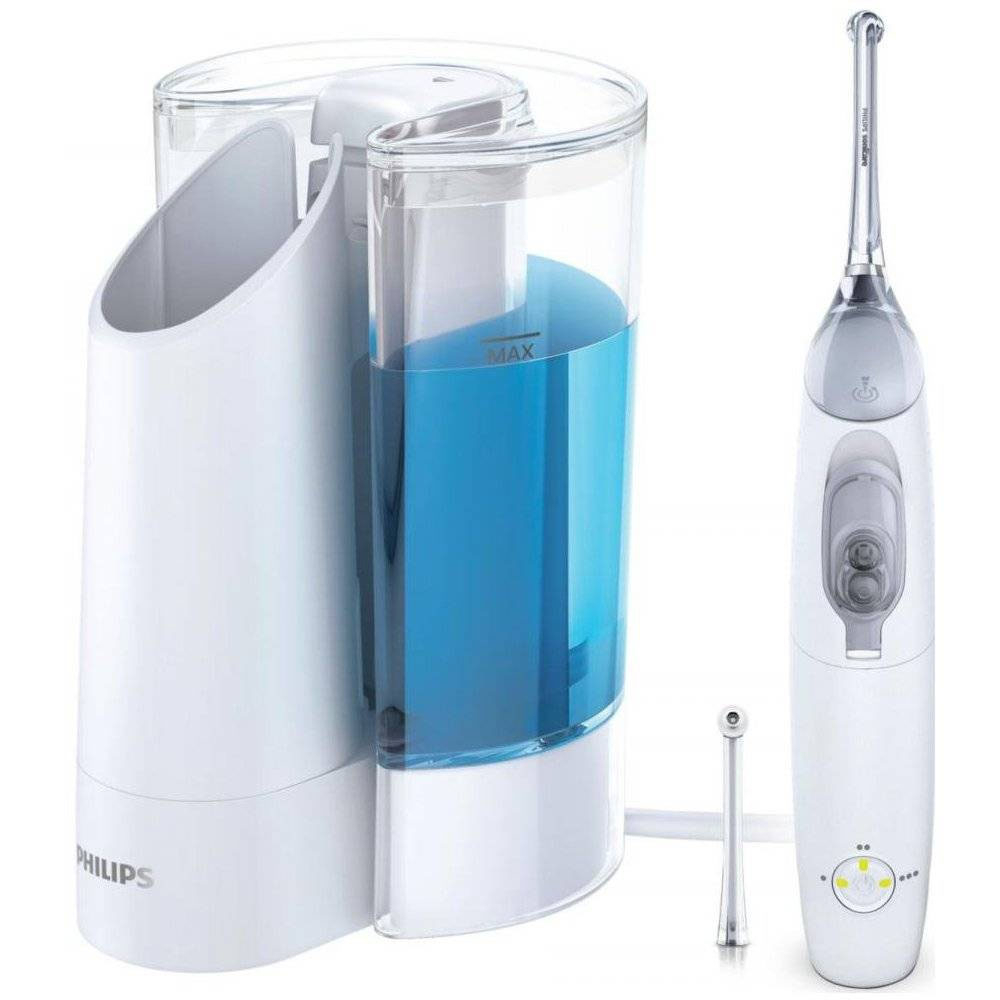



Brushing in the evening should be the most thorough, so after you finish with the manual toothbrush, you should also use the interdental toothbrush to finish up and eliminate everything that was not possible to remove with the other one. Other instruments for oral hygiene that could be useful when wearing braces: mouth shower, electric toothbrush with specific heads for braces, floss.
If the cleaning of the appliance is not good enough, the bacterial plaque accumulates and stagnates around the brackets dissolving the minerals from the teeth which will appear as white spots after debonding the appliance. These white spots are initial caries, so they are permanent impairments. They are a very unpleasant consequence of orthodontic treatment, which deteriorate both the patient’s health and the outcome of the treatment and they appear only because of lack of proper cleaning.
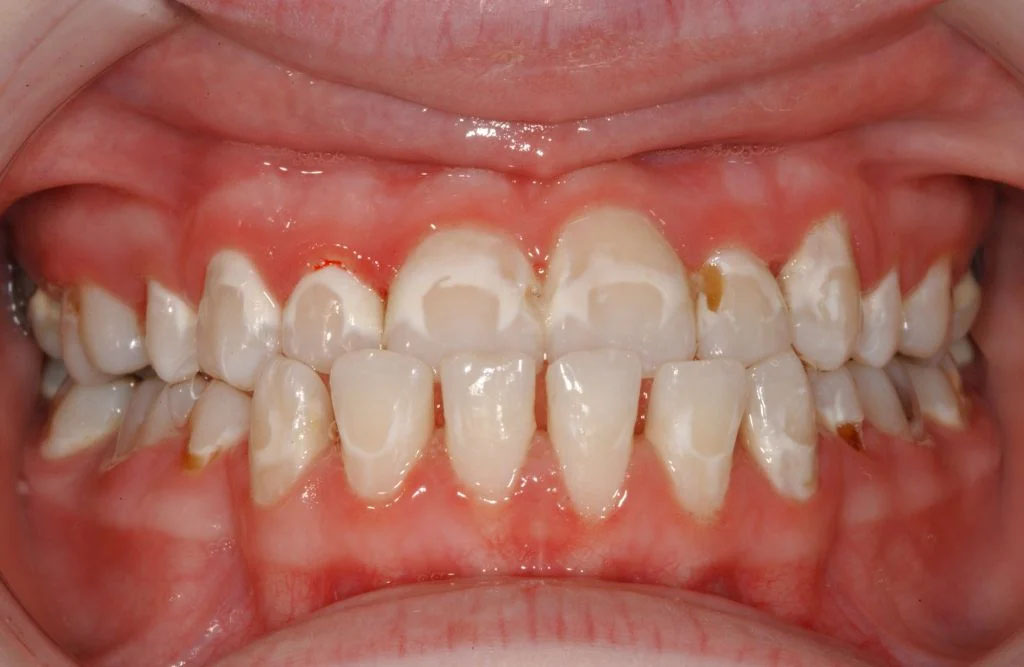
Book an appointment!
Contact Info
Address
Sfântu Gheorghe, str Konsza Samu nr 22, jud Covasna 520009
